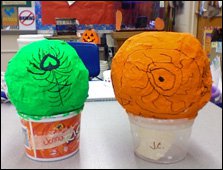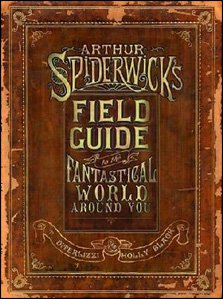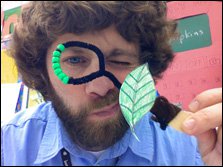The Mind’s Eye: A Halloween Activity to Ignite Young Imaginations
Your content has been saved!
Go to My Saved Content.I want you to reach up and feel the bumps on your head. Let your fingers run along the hills and crevices of your dome; examine the terrain. End your exploration by palming your entire head like a basketball. Now I want you to unzip your skull. I can hear the slow clicking of each metal tooth. And inside your head you won't find a brain, but an eyeball: a large, gooey eyeball pivoting on an elastic tendon. Searching. Looking. Staring. It's your mind's eye. And it depends on you, my writing friend, as to how much that eyeball can see. You need to encourage your visionary sphere to see every tiny detail the world has to offer and to even push it to see beyond reality. If you dare, of course.
Tom Romano, in his book Writing with Passion, encourages junior writers to "Develop a writing state of mind, and you need never worry about where to get ideas." It's imperative for young authors to develop and harness the power of the mind's eye, to stretch their thinking, and "Open up all of your senses." The mind's eye sees many things. It can help you visualize a story arc, describe an object, or act as a window to the unknown and the twisted. It can help you create something out of nothing.
Get Crafty
My first activity with the mind's eye is to literally create it. I started out having my students draw their mind's eye. I wasn't brave enough to get too crafty, but I soon realized that the process of making the eye was a great community-builder. It's an afternoon of eyeballs with parents, students, and teachers.

1. Ball up a bunch of newspaper to the desired size.
2. Cover with masking tape to keep the ball intact.
3. Layer strips of newspaper doused in paper mache glue. Let dry.
4. Paint. Let dry.
5. Detail with Sharpie markers and paint markers.
I encourage my students to detail their eye to match their writing genre. If they like to write fantasy and Sci-Fi, it might look creepy or weird. If they fancy writing about sports, it may look like a football or a baseball. Of course they can decorate it like a normal eye, but that's no fun, is it? Display the eyes around the room to remind the students to visualize when they are writing. And when the state test lumbers into town -- whammo! I slam those eyes right on their desks during the writing section. Is that cheating?
Now, Let's Go on a Faerie Hunt

We all know that Halloween has been a questionable holiday. Some school districts have totally ditched it; some make it an inservice day for teachers without students; some even changed the name. So, if the absence of Halloween has got you down in the dumps, you can always mask it (he-he) with...hmm...let's say literature. Yes! Spook it up a bit with some good literature and have a fairy (faerie) hunt in the name of Arthur Spiderwick. The Spiderwick Chronicles five-book series, written by Holly Black, lends itself to some good old-fashioned fantasy. Without writing a full-blown summary, the lead characters/siblings, Simon, Jared, and Mallory Grace, find a magical field guide that informs them about the fantastical world around them. With the book in hand, they have many exciting adventures.
Okay, here's the connection to the mind's eye. In the story, the Faeries are completely invisible to the humans unless they want to be seen. However, there are certain ways that humans can see into Faerie without permission. It's called The Sight. If you were born with red hair, you may have The Sight. If you are a seventh son of a seventh son or a seventh daughter of a seventh daughter, you may have the The Sight. If you are out of luck in the biological area, you can still gain The Sight if you possess a seeing stone. Yahtzee! A seeing stone is a rock with a hole bored through it by natural means, such as running water.
Faeries in the Classroom and Beyond
My students and I create seeing stone-like devices with paper, pipe cleaners, beads, etc... It must be a circle to work. Then we plan on a having a Faerie hunt. I've done this right on Halloween. We dress in either green or red. According to the Field Guide, red is a protective color. You'll be safe wearing red, but it might be hard to find some faeries. And although green attracts faeries, sometimes they are infuriated by humans wearing their color (yikes!). It's hysterical listening to the kids trying to decide which color to wear. You can also wear clothes inside out and carry a bag of salt for protection.

Clothes? Check.
Salt Bag? Check.
Seeing Device? Check.
Mind's Eye at the ready? Check.
Journal? Check.
I usually start in the classroom then move throughout the school and even outside. The students explore the world of Faerie with their seeing device fueled by the mind's eye. The better the mind's eye, the more vivid the world of Faerie will be. Make sure each student shares his or her seeing stone observations at the end of the hunt. This is a total blast!
Using the mind's eye takes practice and patience. It's not going to happen overnight. It takes a positive writing attitude to fully develop the mind's eye. You have to believe, my friend. Famous author Donald Murray once said that the product produced was as much the result of attitude as it was of skill. Keep on trucking; keep on practicing. Keep that eye sharp.